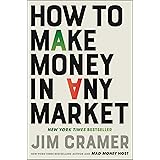Recent shifts in global economic paradigms suggest a re-evaluation of established investment wisdom. While historical data often underscores the enduring appeal of precious metals, particularly for wealth preservation, the outlook for actively investing in gold by 2025 warrants a meticulous examination. The accompanying video raises a critical question regarding the efficacy of gold as a premier investment in the near future, compelling a deeper dive into the multifaceted factors that could diminish its traditional luster.
The Shifting Landscape of Gold Investment
Historically, gold has been revered as a quintessential safe-haven asset, frequently sought during periods of economic instability or high inflation. Its role as a store of value has been foundational to many portfolio diversification strategies for centuries. However, the dynamics influencing the gold market are continually evolving, necessitating a contemporary analytical framework. The prevailing macroeconomic environment often dictates the attractiveness of such traditional assets, and future projections indicate potential headwinds for gold investment.
A key consideration pertains to real interest rates, which represent the nominal interest rate adjusted for inflation. When real interest rates are high or on an upward trajectory, non-yielding assets like gold typically become less appealing. This is primarily because the opportunity cost of holding gold, which generates no income, increases relative to interest-bearing investments. Moreover, the strengthening of the U.S. dollar, often driven by Federal Reserve monetary policy, can exert downward pressure on gold prices, as the metal becomes more expensive for holders of other currencies.
Macroeconomic Headwinds for Gold’s Performance in 2025
The global economic recovery post-pandemic is being characterized by unique inflationary pressures and corresponding central bank responses. Decisions related to quantitative easing or tightening cycles are profoundly impactful on commodity markets, including gold. Should central banks aggressively pursue monetary tightening to combat persistent inflation, an environment of higher interest rates is likely to materialize. Such a scenario historically correlates with a decreased investor appetite for investing in gold.
Furthermore, geopolitical stability, or the lack thereof, has always been a significant determinant of gold’s price action. While escalating tensions can traditionally trigger a flight to safety, an increasingly interconnected global economy also introduces new variables. Supply chain disruptions, energy crises, and nuanced international relations can create complex market reactions that do not always align with simple ‘risk-off’ patterns favoring gold. Analysts are routinely observing that market sentiment is now influenced by a broader array of indicators, making gold’s safe-haven status less absolute.
Evaluating Gold’s Performance Against Diversifying Investment Alternatives
The rise of alternative asset classes presents a formidable challenge to gold’s historical dominance as an inflation hedge and store of value. Digital assets, for instance, have demonstrated significant growth and are increasingly perceived as a viable, albeit volatile, diversification tool. While cryptocurrency markets present their own unique risk profiles, their potential for substantial returns often draws capital away from traditional asset classes, including precious metals.
Investment capital is increasingly being allocated towards sectors driven by innovation and technological advancement. These growth-oriented investments, spanning areas such as artificial intelligence, biotechnology, and renewable energy, offer different return profiles and portfolio synergies. Consequently, a comprehensive asset allocation strategy now demands a thorough comparison of gold’s potential returns and risk-adjusted performance against these burgeoning alternatives. This re-evaluation often reveals a diminishing relative appeal for solely investing in gold when considering total portfolio optimization.
Strategic Asset Allocation: Re-evaluating Gold’s Weight
Portfolio management dictates a thoughtful approach to asset allocation, wherein each component is assessed for its contribution to overall risk and return objectives. While a modest allocation to gold may always be prudent for certain investors seeking a hedge against extreme tail risks, its proportion within a diversified portfolio may require adjustment. Current financial models often suggest that an excessive reliance on a single asset class, even a historically stable one, can lead to suboptimal outcomes.
The opportunity cost associated with holding a significant position in gold must be meticulously weighed against the potential gains from other asset classes. Empirical studies often indicate that a truly diversified portfolio incorporates a mix of equities, fixed income, real estate, and select alternative investments, each calibrated to prevailing market conditions. Therefore, decisions surrounding investing in gold should be informed by a holistic view of market forecasts and individual financial objectives, rather than solely relying on past performance or conventional wisdom.











